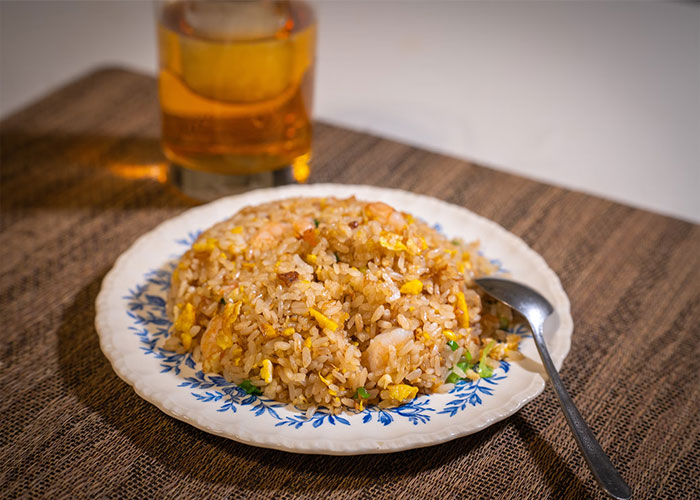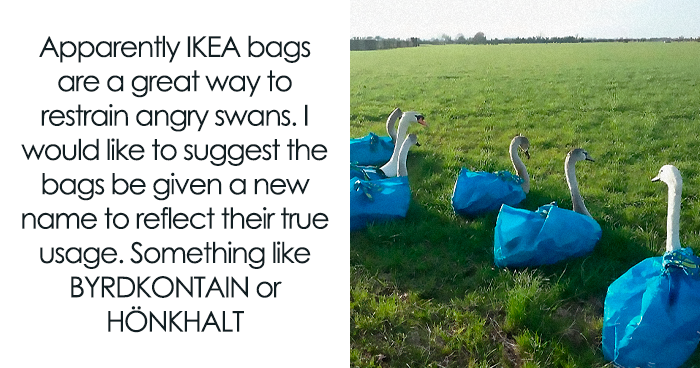
Man Eats His Last Supper Without Knowing, Doctors Warn Against The “Fried Rice Syndrome”
InterviewIf you have ever eyeballed the amount of pasta or rice you’re cooking, you have inevitably accidentally made too much. Naturally, most of us take this surplus and turn it into leftovers, but did you know that improperly reheated rice can actually be deadly?
Doctor and TikToker Dr. Joe went viral for explaining why a 20-year-old man died after eating pasta that had just been sitting out a bit too long. In fact, this happens so often that medical professionals even have a term for it, “Fried Rice Syndrome.” Netizens were shocked to learn that, for some, a normal habit of leaving their leftovers unrefrigerated can be downright deadly. We got in touch with Dr. Joe to learn more.
Leftover fried rice is a staple in many households, but it and pasta can actually be dangerous, if not stored correctly
Image credits: Jie Wang (not the actual photo)
“Do not make your food put it in a Tupperware and then leave it on your counter for a week because you literally will pass away”
Image credits: drjoe_md
“This 20 year old died of a condition it’s commonly referred to as fried rice syndrome. This is a condition in which you’d have bacterial overgrowth it pasta or rice is left at room temperature for too long. In med school were taught the phrase reheat rice be serious to remember which bacteria causes this condition.”
Image credits: drjoe_md
Image credits: Ello (not the actual photo)
“So how long is too long? You should not eat pasta or rice that’s been left at room temperature unrefrigerated for more than two hours”
Image credits: drjoe_md
You can view the full video here
Dr. Joe shared some other thoughts with us
Bored Panda got in touch with Dr. Joe and he was kind enough to answer some of our questions. We were curious to hear what other common food practices carried some risks with them.
- “Leaving perishable foods like meat, dairy, and eggs out at room temperature for extended periods
- Cross-contaminating cooked and raw foods, particularly meat
- Consuming raw or undercooked meats, seafood, or eggs, can expose you to harmful bacteria like Salmonella or E. coli
- Improperly thawing frozen foods at room temperature
- Using the same cutting board for fruits and vegetables that were used for raw meat without proper cleaning”
“To minimize the risk of food poisoning, it’s crucial to reheat pasta or rice to a temperature of at least 165°F (74°C). Use a food thermometer to check the internal temperature. Microwaving is often the quickest and most convenient method, but you can also reheat on the stovetop or in an oven. Stir the food occasionally during the reheating process to ensure even heat distribution,” he shared with Bored Panda. We also asked him for some other food storage tips.
- “Store perishable foods in the refrigerator within two hours of cooking or purchasing. In hot weather (above 90°F), this should be done within one hour.
- Use airtight containers to store food to minimize the risk of bacterial growth and cross-contamination.
- Use labels or markers to indicate when the food was cooked or purchased and consumed within recommended timeframes.
- Utilize the freezer for long-term storage, keeping in mind that while freezing can stop bacterial growth, it does not kill bacteria.”
“Proper food handling and storage are critical to preventing foodborne illnesses like Fried Rice Syndrome. Being mindful of temperature control and avoiding cross-contamination can go a long way in ensuring food safety. When in doubt, it’s always better to err on the side of caution by properly reheating food and adhering to storage guidelines.”
Bacteria are more common than you might think
As the video mentions, bacteria is the number one cause of most food-borne illnesses and deaths. While E-coli and Salmonella are often thought of as the main culprits, the vast majority of food poisoning cases come from the delightfully named Campylobacter jejuni (77.3% of cases.) While these statistics are from the UK, they are likely comparable to most similar nations.
Interestingly, it does seem that most people do a number of things wrong when it comes to storing and preparing ingredients. Take washing chicken, for example. While some swear by this method, studies suggest that this simply increases the risk of transferring bacteria. Unless you do it in a separate basin, and really really wash the meat, you risk “splashing” bacteria onto other surfaces and ingredients.
Nevertheless, some people can’t even imagine cooking chicken without giving it a quick back in the sink first. However, at least the majority of the population understands that meat, chicken, and pork, in particular, are pretty risky, so they cook and store it properly. This can, perhaps, lead to a false sense of security.
Image credits: insung yoon (not the actual photo)
Pasta and rice are not seen as being as risky as chicken
After all, how can pasta or rice be anywhere near as dangerous as chicken? The result is that many folks undervalue “fried rice syndrome” and risk death and illness by leaving things out too long. Because these items often come in a dry form, we overvalue their storage length. Similarly, pasta and rice are leftover staples, so we are pretty used to seeing them cold the next day.
But appearances can be deceiving, even after an hour or more, certain bacteria can flourish on your leftover fried rice or pasta carbonara. Even worse, people often reheat these items incorrectly, improperly killing the bacteria. Pasta is the worst offender, as it’s pretty easy to overcook while reheating, so many people might not use the time and temperature needed to make it safe again.
Image credits: Tina Dawson (not the actual photo)
Reheating these dishes comes with its own challenges
Even if this hasn’t happened to you, you must still thank good luck and a decent immune system. However, the facts are not pretty. Bacillus cereus, the bacteria mentioned in Dr. Joe’s video can happily multiply in rice at 30 °C (86 °F). At this temperature, which is a bit above room temp, it doubles every 30 minutes. Even worse, it increases a million times within 8-10 hours.
While the risk is still relatively low at this point, some people leave these dishes out overnight, with deadly results. If a leftover dish has been left long enough, even proper reheating might not kill the bacteria’s spores. Studies recommend cooking the item for a minimum of five minutes at 121 °C (250 °F) to fully eradicate the spores.
And even any novice cook knows, this means the actual ingredients reaching 121 °C (250 °F), not just the interior of the oven or frying pan. So if you do still want to risk heating up some leftovers, at least tread on the side of caution and blast it with heat. A slightly overcooked dish is, always, better than death.
Netizens were shocked to learn that these staples could be deadly
66Kviews
Share on FacebookWhy the hell would you leave food out overnight (Or for a week??) and then eat it? Gross! That's just basic food safety knowledge. Put it in the fridge!
Why the hell would you leave food out overnight (Or for a week??) and then eat it? Gross! That's just basic food safety knowledge. Put it in the fridge!

 Dark Mode
Dark Mode 

 No fees, cancel anytime
No fees, cancel anytime 















































































13
32